你想制作干冰块吗?你知道干冰块的详细制作过程吗?您想了解干冰块的常见尺寸、重量和价格吗?您想了解干冰块的用途吗?那么你可以阅读这篇文章,在这里你可以找到这些问题的所有答案。本文详细介绍了干冰块的生产工艺、加工规格以及干冰块的用途。如果您还想了解更多有关干冰的信息,请随时向我们询问。
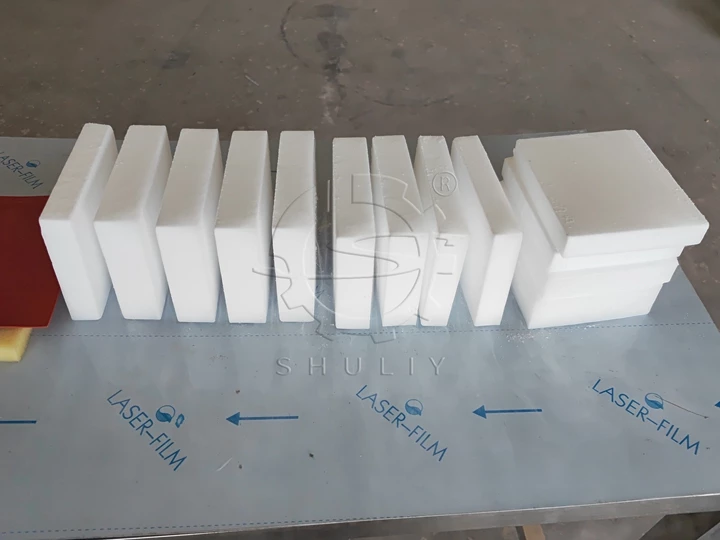
什么是干冰块?
干冰块是一种由固体二氧化碳 (CO2) 制成的专用冷冻介质。通常,液态二氧化碳被放置在高压容器中,通过减压阀降低温度和压力,使其迅速转变成固态,称为干冰块或 干冰 颗粒。
干冰块的特性
- 极低的温度:干冰块的温度非常低,约为-78.5摄氏度(-109.3华氏度)。这使其成为非常有效的冷却剂。
- 快速蒸发:干冰块在室温下快速蒸发并转化为二氧化碳气体。这种快速蒸发使其可用于特效、舞台和清洁应用。
- 无残留:干冰块蒸发时不会留下水分或残留物,非常适合食品运输和实验室实验等应用。
- 重:干冰块比水重,这使得它在冷藏包装、运输和储存过程中更加稳定。
- 导电:由于干冰块是电绝缘体,因此可以安全地用于一些需要冷却的电子设备。
- 安全预防措施:使用干冰块时需要适当通风,因为蒸发产生的二氧化碳气体会在密闭空间内积聚。直接接触干冰块会导致冻伤,因此需要采取防护措施。
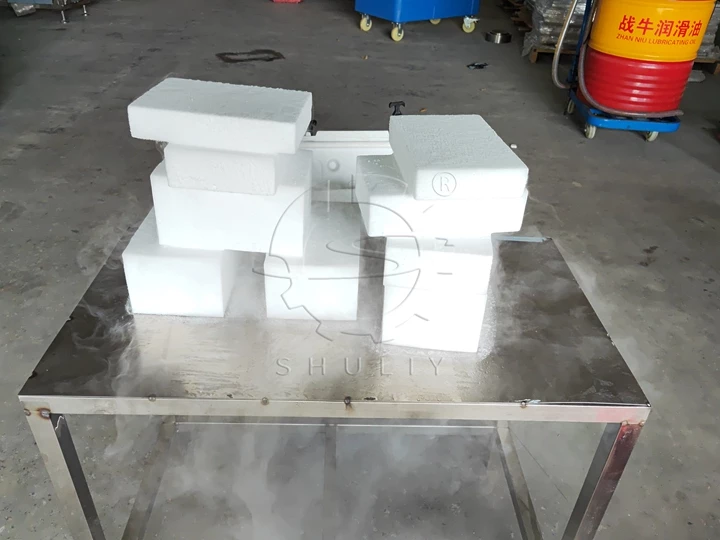
如何大量制作干冰块?
加工干冰块需要使用专门的设备,通常包括干冰块压机。以下是一般干冰加工步骤:
- 液态二氧化碳供应:首先,需要准备液态二氧化碳(Liquid CO2)。这通常是通过将管线或钢瓶连接到液态二氧化碳供应源来实现的。
- 液态二氧化碳的压缩:液态二氧化碳被压缩并通过管道输送到制冰机。
- 制冷系统: 干冰块机 包含将液态二氧化碳转化为固态的制冷系统。在机器中,液态二氧化碳的压力迅速降低,导致部分液态二氧化碳转化为气态和固态。
- 挤压和切割:将制成的干冰块通过挤压机构和切割机构形成所需尺寸的块。这通常涉及通过模具或刀片挤压干冰块以形成均匀的块。
- 收集和包装:成型的干冰块被收集并送往包装区。通常,干冰块被包装到合适的容器中以防止它们过早蒸发。
- 储存和配送:加工后的干冰块可以储存在适当的干冰储罐或仓库中,然后通过冷链运输配送给客户。
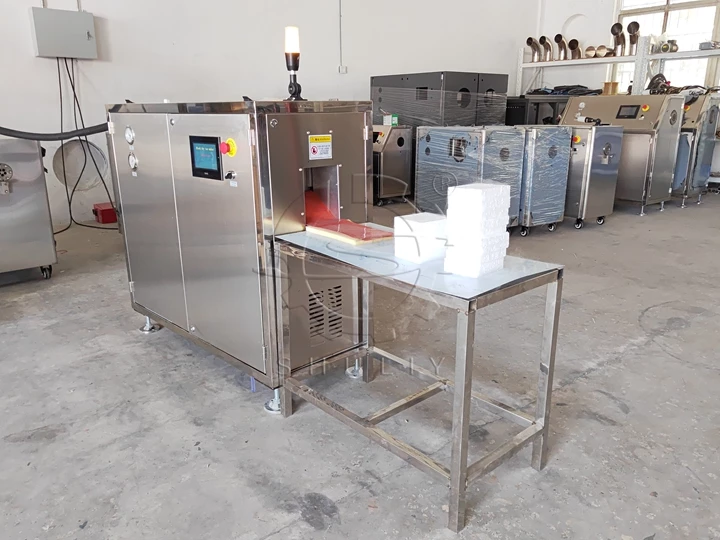
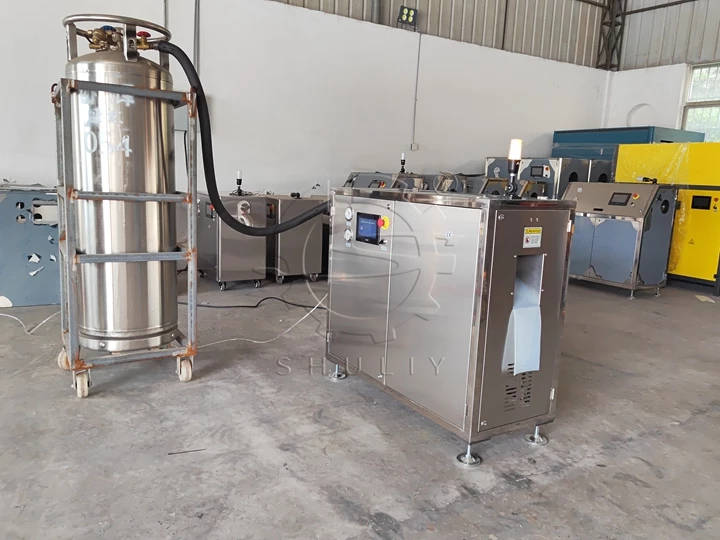
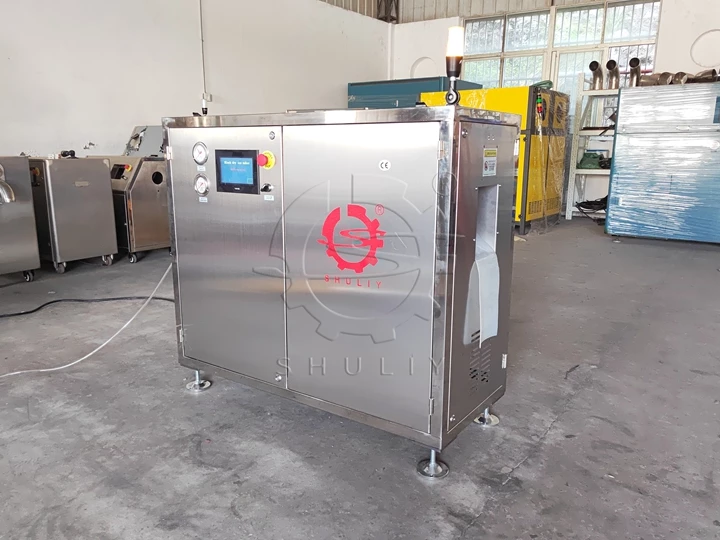
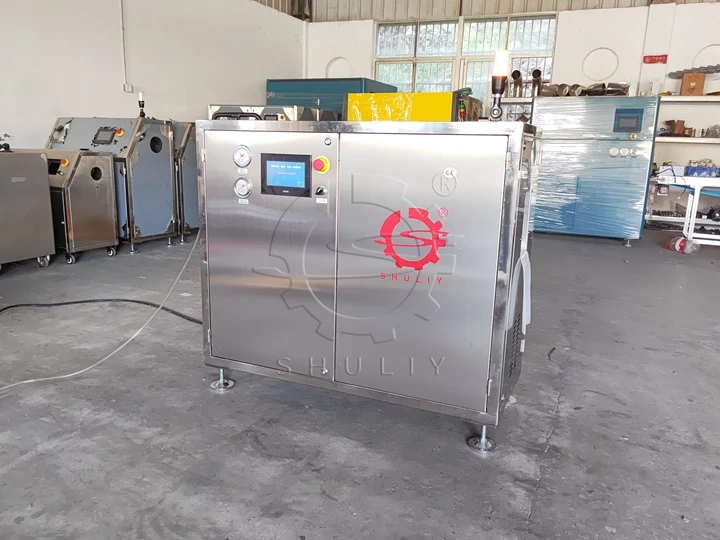
常见的干冰块尺寸、重量和价格
干冰块的尺寸、重量和价格可能会因供应商、地区和市场需求而异。以下是一些常见的干冰块尺寸供参考:
干冰块尺寸:干冰块的常见尺寸包括方形块和矩形形状。方形块的尺寸通常在 2 英寸(5 厘米)至 3 英寸(7.6 厘米)之间,而矩形块可能更大。
干冰块重量:干冰块的重量可能会根据生产商和客户的需求而变化。常见的重量范围包括 1 磅(0.45 千克)至 50 磅(22.7 千克)。重量较轻的块适用于小型冷藏包装,而较大的块则用于冷链运输等大规模应用。
干冰块价格:干冰通常按磅定价,价格可能受到多种因素的影响,包括地理位置、市场需求、可用性以及干冰的生产方式。一般来说,干冰相对昂贵,因为其生产和运输过程需要专门的设备和条件。
要获得准确的干冰块价格和规格信息,建议直接联系您当地的干冰供应商或制造商。这是因为价格和规格可能因地区和供应商而异。此外,一些供应商可能会提供定制的干冰块尺寸和重量,以满足特定客户的需求。
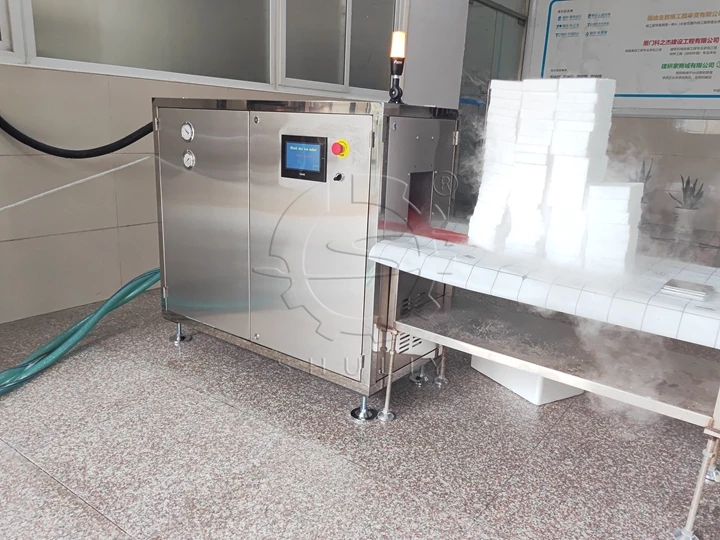
干冰块的主要用途
- 冷链运输:干冰块是冷链运输的关键要素。它用于在运输过程中对温度敏感的物品(例如食品、药品和生物样本)保持低温。
- 药品保存:干冰块用于制药和医疗领域,用于保存和运输生物制品、疫苗、血液、医学样本。
- 食品冷藏:干冰块广泛应用于食品行业,特别是需要冷藏的食品、冷冻食品、海鲜等的运输和展示。
- 实验室和科学研究:干冰块在实验室中用于冷藏、冷冻样品和实验,以及一些化学实验中的特殊应用。
- 舞台效果:干冰用于舞台和特效制作,创造独特的烟雾效果。
- 清洁和表面处理:干冰块用于通过干冰喷射和清洁技术来清洁和处理表面,特别是在清洁设备和去除污垢方面。
- 食品制作和展示:干冰常用于在冰淇淋车、冷饮摊等食品展示上制造特殊效果。